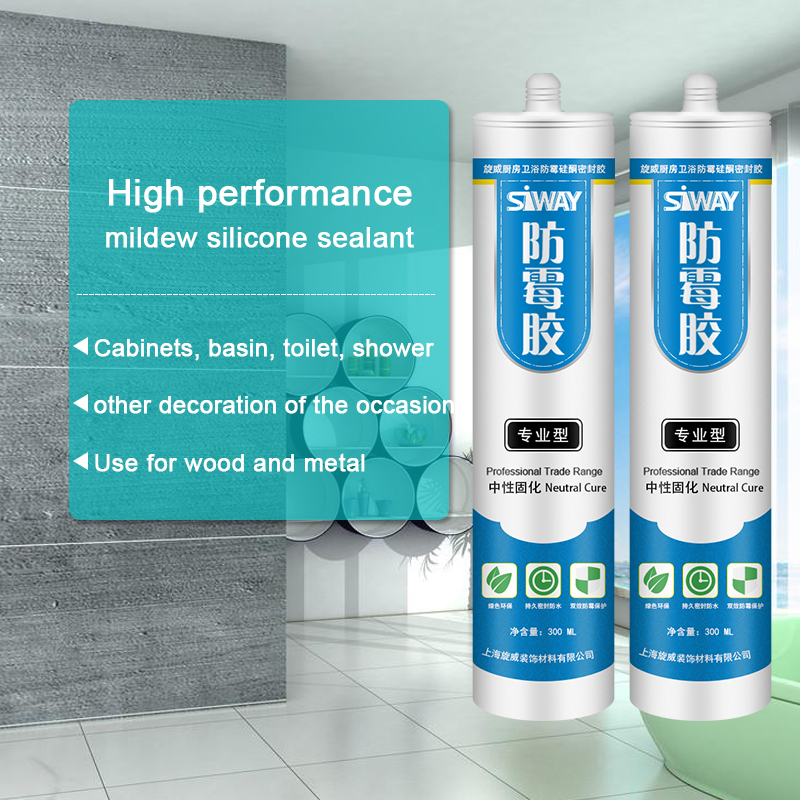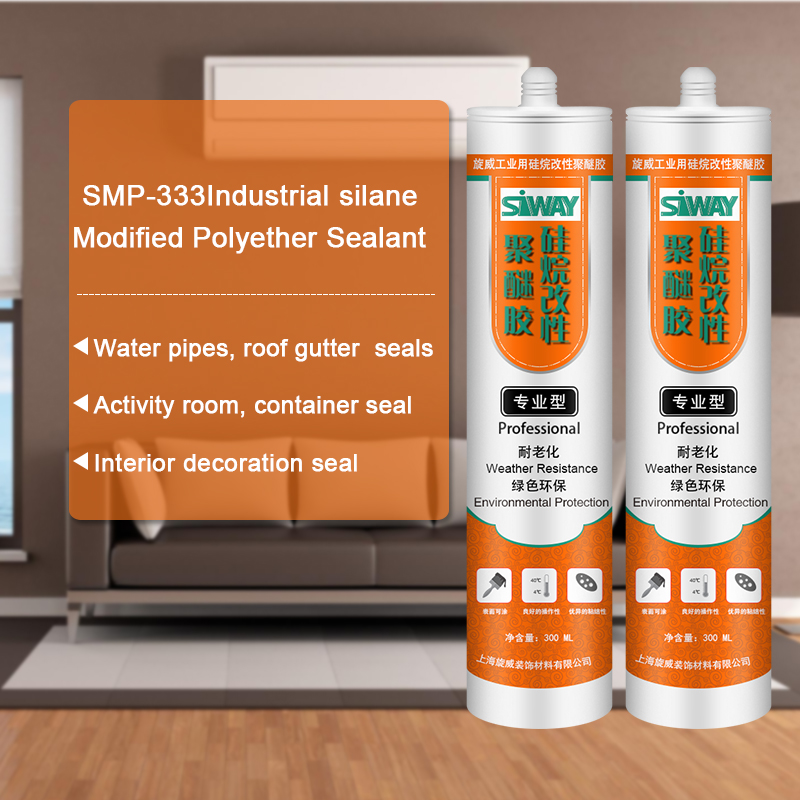Wholesale 100% Original High performance mildew silicone sealant for Hanover Manufacturers
Short Description:
Description Siway high-performance mildew silicone sealant is a one-component, neutral curing, designed for decoration in the need to provide good anti-mildew performance of the occasion designed by environmental protection products. This product can be easily extruded under wide temperature conditions, relying on moisture in the air to cure into excellent, durable elastic silicone rubber, and most of the building materials in the case without primer can produce superior Of the bondability. I...
It adheres to the tenet "Honest, industrious, enterprising, innovative" to develop new products constantly. It regards customers, success as its own success. Let us develop prosperous future hand in hand for Wholesale 100% Original High performance mildew silicone sealant for Hanover Manufacturers, items won certifications with the regional and international primary authorities. For far more detailed information, please contact us!
Description
Siway high-performance mildew silicone sealant is a one-component, neutral curing, designed for decoration in the need to provide good anti-mildew performance of the occasion designed by environmental protection products. This product can be easily extruded under wide temperature conditions, relying on moisture in the air to cure into excellent, durable elastic silicone rubber, and most of the building materials in the case without primer can produce superior Of the bondability. It has the following product features:
- easy to operate, you can always use out;
- Neutral curing, suitable for most building materials without adverse effects or corrosion;
- Excellent adhesion: no primer, with most of the building materials to form a strong cohesive force;
- excellent weather resistance and aging performance;
- excellent long-term anti-mildew ability;
- Good environmental performance.
Where to use
Siway neutral high-performance anti-mildew silicone sealant can be widely used in a variety of high-humidity environment, the interface of the waterproof seal and filling and so on, such as cabinets, basin, toilet, shower, etc., and other needs long-term Moldy effect of the decoration of the occasion.
Key Features
1. 100% silicone
2. Easy to use
3. Waterproofing and weatherproofing
4. Primerless adhesion to most building materials
5. 12.5% movement capability
Technical data sheet
| Test standard | Test project | Unit | value |
| Before curing——25℃,50%R.H. | |||
| GB13477 | Flow, sagging or vertical flow | mm | 0 |
| GB13477 | surface drying time(25℃,50%R.H.) | min | 60 |
| GB13477 | Extrusion | (ml/min) | 355 |
| Sealant curing speed and operating time will have different with different temperatures and temperature, high temperature and high humidity can make sealant curing speed faster, rather low temperature and low humidity are slower.21 days after curing——25℃,50%R.H. | |||
| GB13477 | The ultimate tensile strength | Mpa | 0.9 |
| GB13477 | Movement capability | % | 12.5 |
| Mildew grade | 0 grade | 0 grade | |
Certification
JC/T881-2001
Color
Black,White,Gray
Package
300ml in cartridge * 24 per box, 590ml in sausage *20 per box
Shelf life
12 months
Note
If you want the TDS or MSDS or other details, please contact with our sales person.
Paper faced mosaic glass tile requires an installation method that has a few more steps that would normally be used compared to other types of mosaic tile. This is especially true if the mosaic glass tile is transparent. First it is important to use the correct setting material to install glass tile. Glass tile should never be installed using mastic. The type of thinset needed to install glass tile is one that is white and has a high polymer content. I usually use “Tec Superflex”. It is also important that the thinset used is one that has the same color across multiple units, to insure color consistency when installing large projects that require more than one bag of thinset. Using a lower quality thinset can cause variation in color and shading of the glass tile, and also result in tiles not adhering to the mortar. Paper faced tiles like the mosaic tile used in this video are usually very thin so oozing of the thinset between the tiles can be a problem if the correct trowel is not used to spread the thinset. Despite this one hundred percent coverage must be achieved on the back of the tile to obtain a proper installation. If 100% coverage is not achieved, visible color shading will be present throughout the tile installation which will create an unpleasant final product. In this case I used a 3/16″th V-Notched trowel. The thinset is first spread on the wall with the notched side of the trowel in such a way that the lines left by the trowel are all even in depth and uniformly going in the same direction. Once this is achieved, the flat side of the trowel is used to “Knock” down the ridges and create a flat even bed of mortar, but at the same time not removing any of the thinset from the wall. The next step is to start setting the tiles in the prepared thinset by placing the tiles on the wall a sheet at a time, aligning the grout lines between sheets. Once a number of sheets have been placed then it is time to “Beat them in” this is done by placing a flat piece of wood, such as a small segment of 2×4, on the tile and then gently tapping the wood with a hammer so as to set the mosaic tile into the thinset until 100% coverage is achieved. Do not use a rubber float to beat in the tile. Let the tile “Set” for a period of time, 30 minutes more or less. Once this time period has elapsed it is time to start wetting the paper for removal. This will probably take 5 to 10 minutes and require that you wet the surface of the paper several times. When the paper has loosened start pealing it off the tile, do not wait until the next day to do this, remove the paper while the thinset is still fresh. This will allow for necessary adjustments to individual tiles. Continue this process until the installation of the tile is complete. Allow the tile to set, all residue of the paper adhesive should be removed before grouting. Determine whether sanded or unsanded grout should be used, in this case unsanded grout was needed. Some glass mosaic tile require that they be sealed before grouting, this particular tile did not call for sealing. The proceeding is intended as a guide line and not complete instructions on how to install mosaic glass tile, complete installation instructions are usually supplied with the tile at the time of purchase, or may be included in the tile packaging.
This Oceanside mosaic glass tile bathroom was installed by Sal DiBlasi, Elite-Tile Company in Boston’s North Shore.
Youtube Channel https://www.youtube.com/user/saldibs?feature=watch
Facebookhttps://www.facebook.com/pages/Elite-Tile-Company/56681633342





